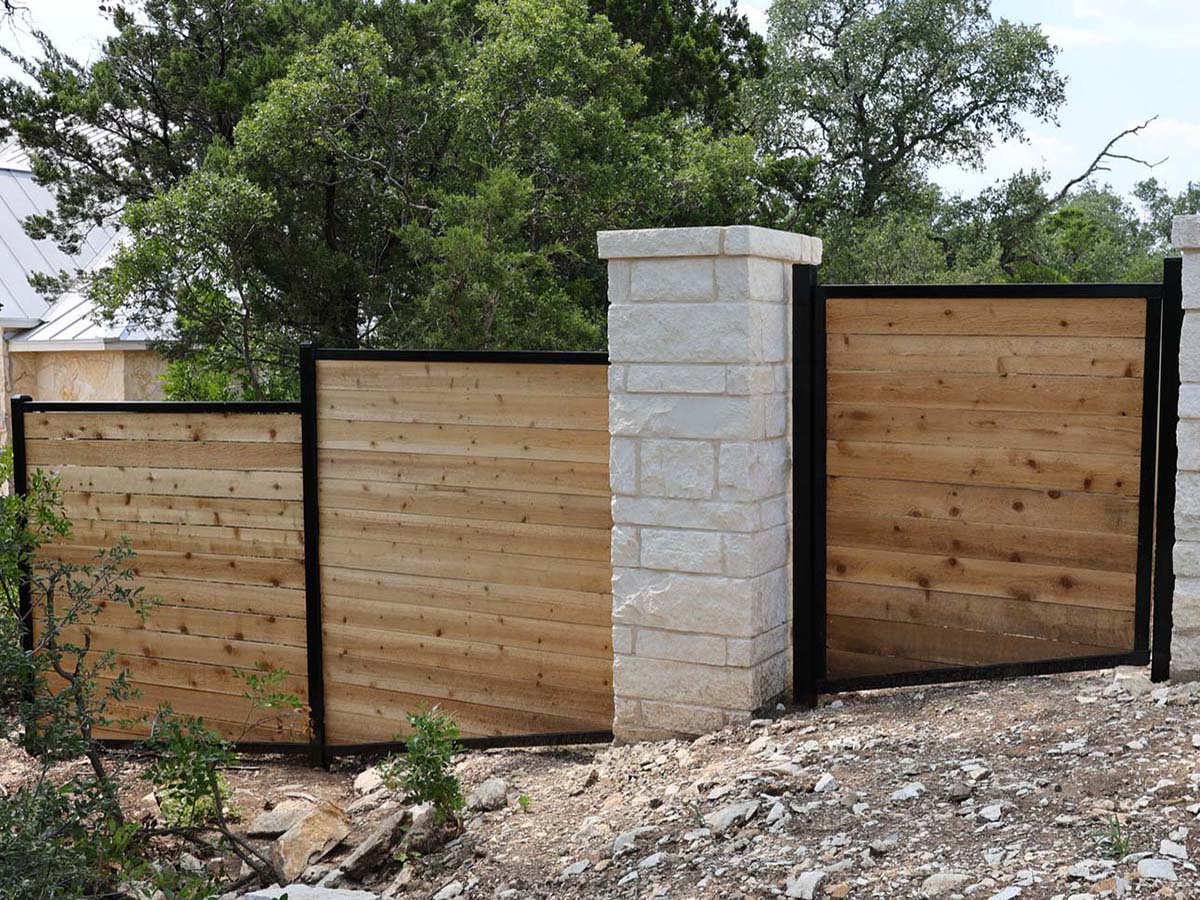All Categories
Featured

As sustainability becomes an increasingly vital consideration for property owners, even more individuals are turning to green secure fencing products. Whether you're constructing a fence for privacy, safety and security, or visual purposes, picking products that lessen environmental influence is a great way to add to a much healthier earth. Here's a take a look at the leading environment-friendly fence materials available today and their advantages.
- Bamboo Fence: Fast-Growing and Sustainable. Bamboo is just one of one of the most lasting fencing materials on the market. Unlike traditional timber, bamboo is exceptionally fast-growing, which suggests it can be harvested without depleting forests. This makes it a very eco-friendly source, with some species maturing to 3 feet in a solitary day.
Environmental Benefits: Bamboo soaks up extra co2 than many various other plants, helping to balance out greenhouse gases. Its fast development rate suggests it can be harvested regularly, making it an eco-friendly product. Sturdiness: Bamboo fences are normally immune to bugs and decay, specifically when appropriately dealt with, decreasing the demand for chemical treatments. Aesthetic Charm: Bamboo supplies an one-of-a-kind, natural look that matches both traditional and modern-day landscaping layouts. Nevertheless, while bamboo is a fantastic alternative, it's essential to make certain that the bamboo made use of is sensibly sourced to avoid adding to ecological deterioration.
- Recycled Steel Secure Fencing: Sturdy and Recyclable. Recycled metal fencing, such as aluminum or steel, uses an environmentally friendly choice to traditional wood fences. These steels are often made from recycled products, decreasing the need for brand-new mining and the ecological influence connected with drawing out raw materials.

Environmental Advantages: Steels like light weight aluminum and steel are 100% recyclable, implying they can be recycled and repurposed indefinitely without losing quality. Resilience: Metal fencings are extremely long lasting, resistant to weather, parasites, and use, making them a long-lasting choice that does not require to be changed often. Reduced Maintenance: Recycled metal fences require very little maintenance and do not need to be painted or sealed regularly, reducing the requirement for extra chemicals. The primary downside is that metal fences may not give the exact same personal privacy as wood or plastic alternatives, as they can have spaces relying on the design.
- Recycled Wood Fencing: Lasting and All-natural. For those that enjoy the timeless look of timber but want a green option, recycled timber fence is an outstanding option. This product is made from recovered timber from old buildings, pallets, or also furnishings, diverting these materials from garbage dumps.
Environmental Advantages: Making use of recycled wood avoids the requirement to reduce brand-new trees, assisting to minimize and conserve forests logging. Visual Allure: Recycled wood supplies a rustic, all-natural appearance and can be customized to match any kind of home design. Sustainability: Because it is sourced from existing wood items, recycled timber does not need brand-new handling, which lowers energy intake and carbon exhausts. While recycled timber fencings are an eco-friendly alternative, they may require even more maintenance over time than steel or bamboo fences, as timber can be prone to decay and insects if not properly treated.

- Living Fences: All-natural and Green. Living fences, which are made from dense plantings like trees, bushes, or hedges, offer a eco-friendly and completely all-natural option to traditional fence materials. These fences not only provide personal privacy yet likewise enhance your garden with attractive plant.
Ecological Benefits: Living fencings can absorb carbon dioxide, provide habitat for wildlife, and enhance air high quality. Sound Decrease: Dense plantings can act as all-natural sound obstacles, reducing web traffic sound or various other undesirable noises. Visual Charm: They include a soft, natural visual to any kind of residential property and can be tailored to fit any style. While living fencings are green, they do require regular maintenance such as pruning, watering, and in some cases pest control.
- Hemp Secure Fencing: Strong and eco-friendly. Hemp is another sustainable product that has actually made its means right into the secure fencing market. Hemp fences are made from strong hemp fibers that are woven with each other to produce eco-friendly and sturdy panels.
Ecological Advantages: Hemp expands swiftly and needs very little water, making it a resource-efficient crop. The product is biodegradable and can be composted when no longer needed. Toughness and Durability: Hemp fencing is surprisingly solid and weather-resistant, making it suitable for many environments. Sustainability: Hemp farming requires less pesticides and plant foods than conventional crops, making it an ecologically liable alternative. Hemp fence may not be as extensively offered as other materials, depending on your place.
Conclusion: Sustainable Choices for Every Need. Choosing eco-friendly fence materials is a great way to decrease your environmental impact while still accomplishing the personal privacy, security, and aesthetic you desire. From fast-growing bamboo to recycled wood and metal, there are a variety of lasting options that can assist you create an attractive, practical fence while sustaining a much healthier planet. By thinking about elements such as sturdiness, upkeep, and ecological impact, you can pick the very best green secure fencing material for your demands and way of life.
Latest Posts
Practical Beauty for every single Home
Published Apr 20, 25
1 min read
The Perfect Flooring for Every Home
Published Apr 20, 25
1 min read
Smooth Floor Covering Installment-- The Carpet Interiors Floor & Home Way
Published Apr 20, 25
2 min read